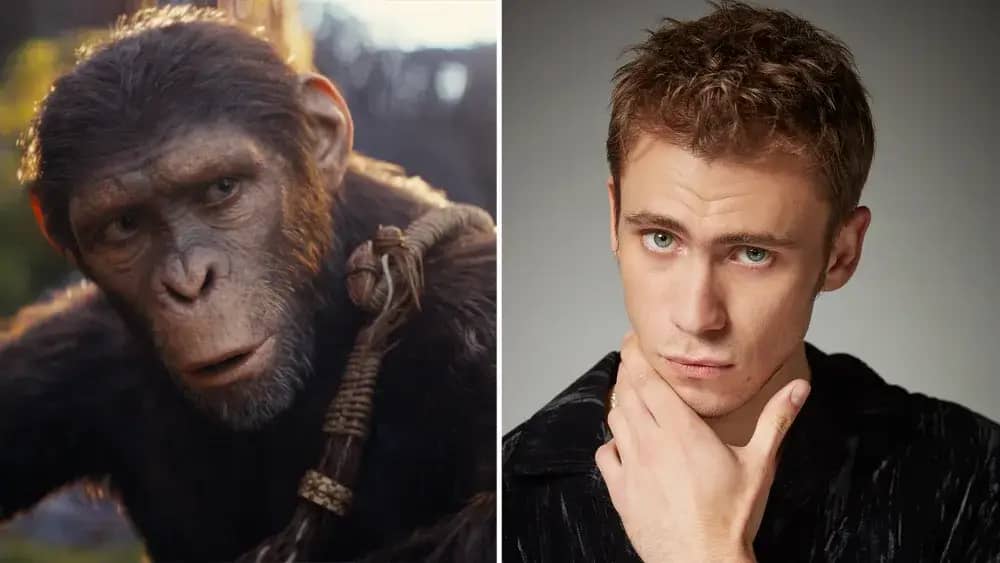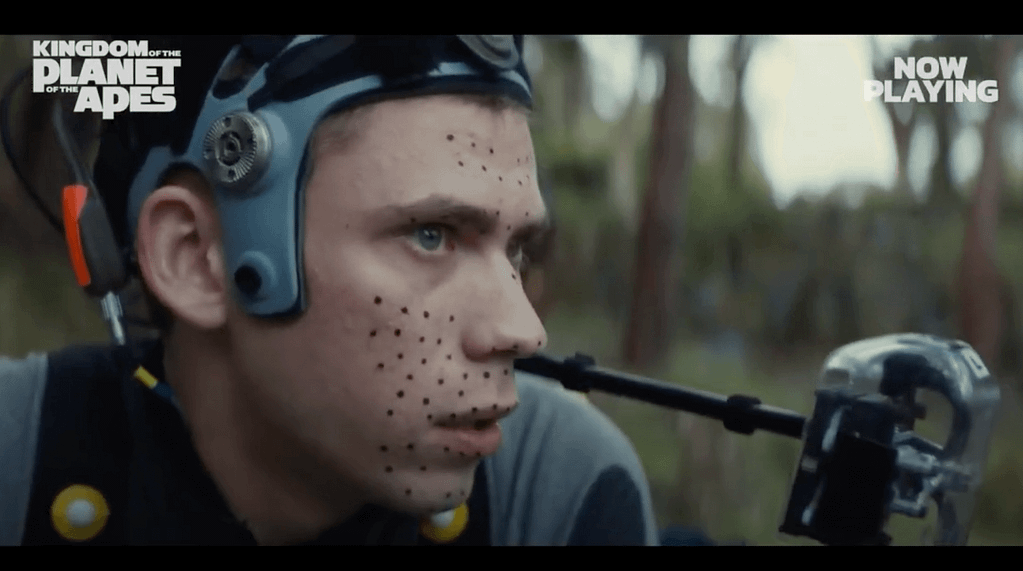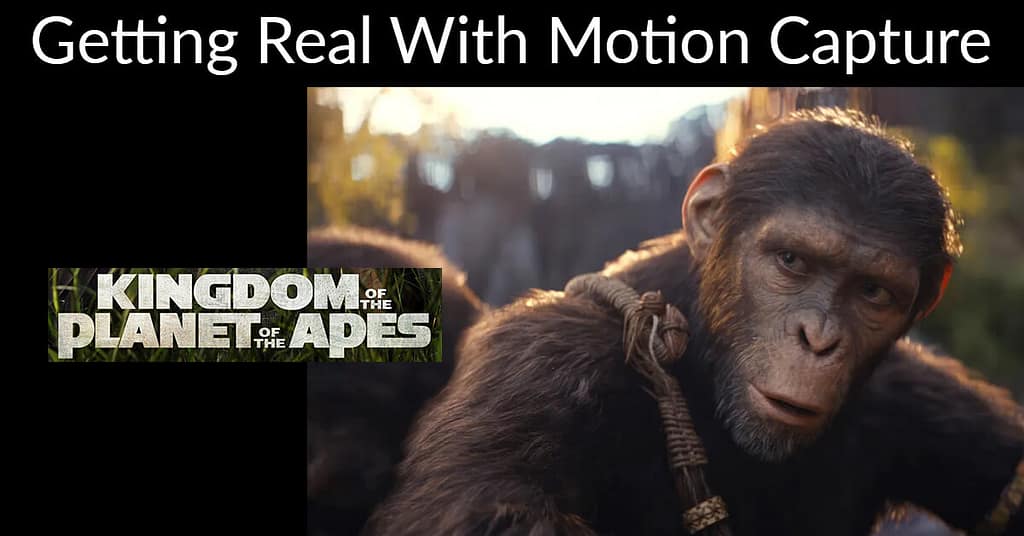I have to admit I’ve never been a huge fan of the Planet of the Apes franchise . . . so when my husband dragged me to see the new one, I was not terribly enthusiastic. I guess I remembered the old movies of it which I barely watched and always found—well, kinda creepy—those people dressed in ape costumes with those weird masks. And then they rode horses? It was just kind of unsettling. Even the Tim Burton one with Helena Bonham-Carter awhile back was a bit strange—although not even an ape mask could mask her amazing acting.

But as this film, The Kingdom of the Planet of the Apes, started playing on the big screen, the popcorn headed for my mouth dropped from my hand. I was in awe.
It looked amazing.
They looked like real apes up there. Having real feelings, real relationships, really interacting.
Where had I been? Thanks to the motion capture suits—and some brilliant actors—Planet of the Apes was reborn for me.
Apparently, they shot the whole movie on location in New Zealand. The director, Wes Ball, didn’t want to shoot it in a studio, VFXing everything. He wanted the actors to feel like they were in the real environment—which helps tremendously with believing in what you are doing as an actor. He wanted to build the sets and have them there, present and really living out the story.
And it translated beautifully.
I had to rush home and watch the “making of” videos because before I did, I just couldn’t wrap my head around HOW THEY DID IT. Of course, everyone’s heard about motion capture suits—we all saw Lord of the Rings and the unbelievably talented Andy Serkis’ lovably creepy, brilliantly portrayed, angsty Gollum. And when I saw a few clips of how the actors worked in those suits, it all became clear to me.

They were just acting. And the performances were being captured and the visual effects were seamlessly added in.
But it made me think, how would it feel to work like that? In those suits. Would it be hard to get used to them? Would it be distracting? And most importantly, how would an actor prepare to do motion capture work? Those suits are expensive, and they don’t have any weekend workshops where you can go and try them out while doing a scene. At least not any that I know of.
I think one of the ways to prepare yourself as an actor to do work like that is working with space objects. Space objects? You mean like miming? No, not exactly. When I was getting my BFA in acting at DePaul’s Theatre School we did a lot of space object work. Creating things with our imagination. Holding an imaginary teacup and drinking out of it. Opening a door that “wasn’t there” and walking through it. Yes, sort of mime stuff, but used for acting. It took a little while but most of us got pretty good at it. That kind of work you’d think wouldn’t be that useful unless you were doing a production of Our Town (where all the props are mimed). But it turned out to be invaluable, especially for creating your environment.


I teach a bit of space object work in my classes because it helps with “referencing” or creating that 3D feel when you are auditioning. It helps with greenscreen work. Think of Daenerys in Game of Thrones—those dragons weren’t real. They were a bit of greenscreen paint over Styrofoam for the most part which she had to bring to life with her acting or with the use of eyelines. Such work trains the imagination. I would even venture to say it would help with motion capture work.


So I sat there in wonder, popcorn uneaten, as I watched the beautiful performances in Planet of the Apes.
One other thing really helped make the performances was the movement. Actors forget how important movement is. Acting is doing. Doing is movement. It’s all about how we physically and then emotionally relate to the scene/space/environment we’re in. These actors had the privilege of working with expert movement coordinator Alain Gauthier (who worked with Cirque du Soliel for years). The first thing he had the actors do was learn to move like apes. If they had not done that, if that structure of movement wasn’t there, no amount of CGI could have fixed their performances. They also had some coaching from Gollum himself as Andy Serkis had a lot of experience playing the leading role in the Apes movie before this one.

This world that was created was fascinating. The actor’s hard work shone through. The director’s vision and creativity brought the story to life. The nuances, the feelings, even the thoughts of the characters.
If you want to see a study in fabulous acting while dealing with the challenges of using technology, go see this movie.
If you want to prepare to play roles like this—get in a good class and get those acting chops up!
Here’s a few videos that go more in-depth into the making of the film and the use of motion capture:
Motion Capture in Kingdom of the Planet of the Apes: https://www.youtube.com/watch?v=hfS05FeCKp8
The COMPLEX VFX Production of The Kingdom of the Planet of the Apes: https://www.youtube.com/watch?v=fd69E3o_3eQ
Inside Ape School WIth Kingdom Of The Planet Of The Apes Stars Kevin Durand and Owen Teague: https://www.youtube.com/watch?v=FkzEtMWF3Q4

